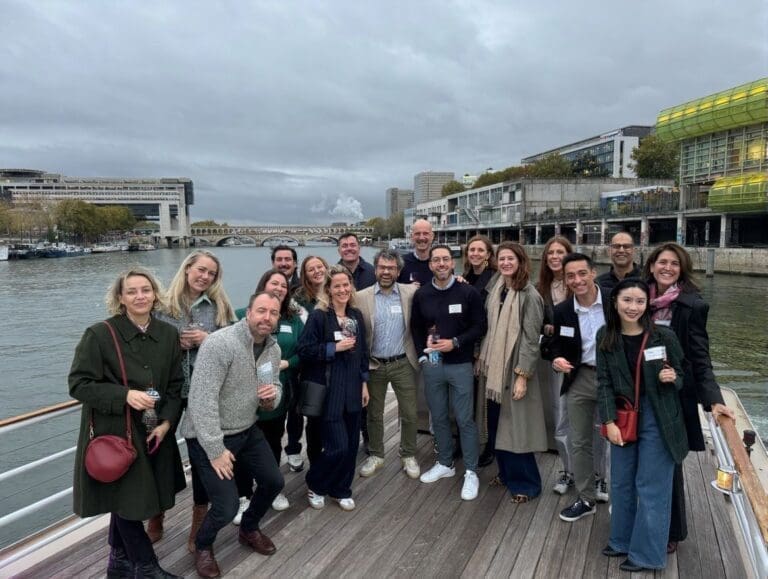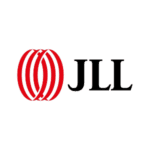Some countries within Asia Pacific are starting to feel relief from COVID-19 and the travel industry is showing the first signs of recovery within the region.
With our access to real-time traveler audiences and unmatched visibility into global travel demand, we’re in a unique position to share current travel trends at the forefront of marketers’ minds. In this blog series, we’ll take a look at the data in order to aid travel marketers in their assessment of this worldwide event. Our goal is to give marketers access to travel industry information on a weekly basis. Marketers can use these trends to inform their strategies during this period and be prepared for the recovery once the situation stabilizes.
This week we take a look at travel in Asia Pacific. The trends we’ve observed so far include signs of recovery in China, the short-term impact of travel restrictions, and the rise of both staycations and hotels for stranded visitors. For a deeper understanding of these trends read more:
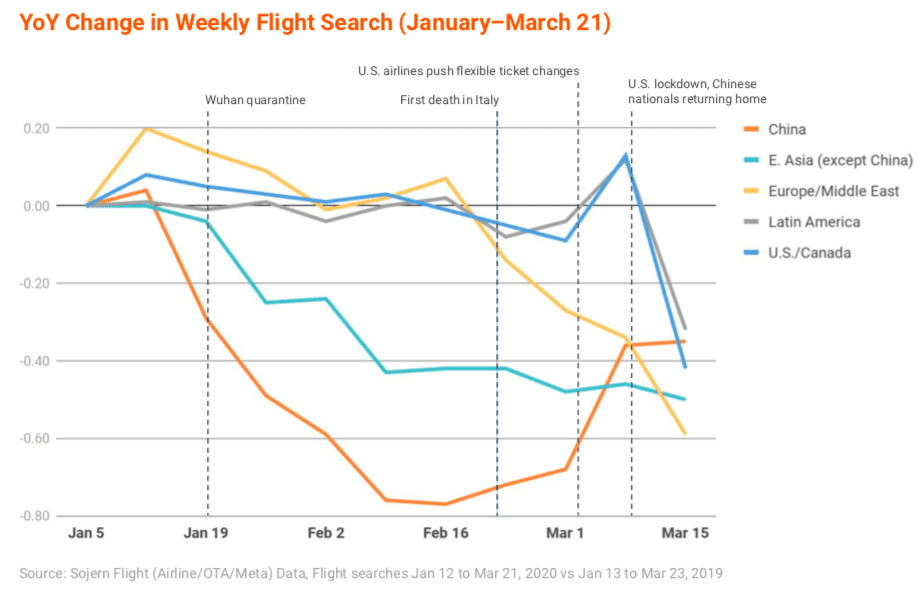
As the virus has drastically shifted regions in the past few weeks, we continue to see the impact on travel intent vary by region. The Americas and Europe put stricter regulations in place while Asia Pacific calls it’s citizens back home.
China Shows First Signs of Recovery, Travel Will Follow
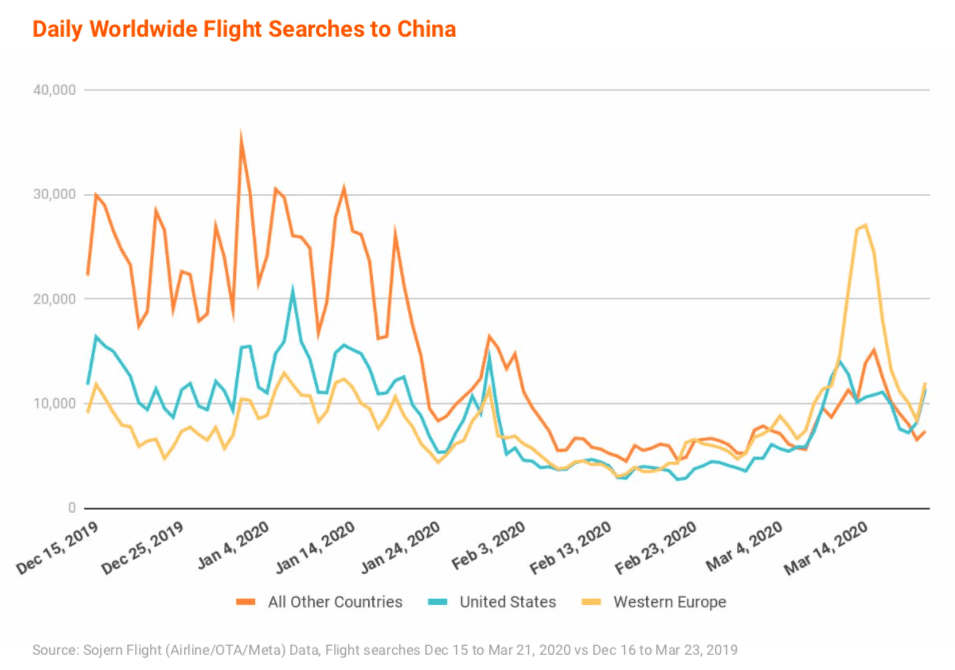
China is showing signs of stabilization at this time. However, universities around the world, primarily in the US and Europe, are closing their doors, leaving Chinese citizens to fly back to Asia, and some are bringing COVID-19 with them. Because of these closures and a call for citizens to return to the country, we’re seeing an increase of last minute, one-way tickets, but no overall trending uptick at this time. Instead, we’re seeing higher than normal flight searches as Chinese citizens depart other regions with growing infection numbers.
Travel Restrictions Spike Last Minute Searches

While Hong Kong, the Philippines, and Singapore, as well as South Korea, Malaysia and Taiwan all had early exposure to COVID-19, they have had tremendous success blocking the spread of this pandemic with strict travel restrictions, mandatory quarantine periods, and total lockdown in some cases. Several of these markets had recently become more lenient in an effort to return life to normalcy—including the Hubei province which announced it would lift travel restrictions this week provided they received a health clearance code. However, since opening borders, more infection has spread as populations settle back into place. In turn, these countries have re-imposed strict travel regulations for foreigners and quarantines on new arrivals. Australia has even announced they’ll be closing their borders for six months.
Sojern’s data analysis noted an interesting trend—flight searches spike each time a travel restriction was announced, followed by an immediate decline. These increases in flight searches are not signs of travel recovery in the traditional sense, but are signs that travel is to be paused in the short-term. For the travel industry, this can be interpreted as short term pain for long-term gain, as signs of governments taking the health of their people and travellers seriously is the best early indicator for true and sustained travel recovery.
Singapore Hotels Are on the Rise
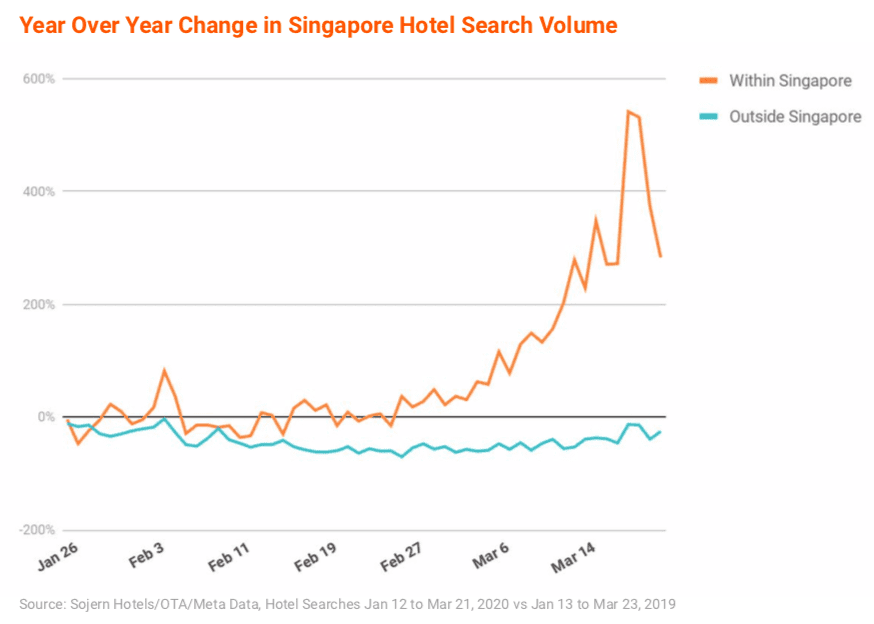
Much of the travel increase we’ve seen came from searches within Singapore. Increasing throughout February, the highest peak occurred on March 18 and 19, the day that Malaysia’s borders were locked down, and thousands of Malaysian workers were suddenly stranded in Singapore. This sparked a significant influx of last-minute hotel searches as Singapore companies worked with their government to house thousands of affected employees in hotels until at least March 31st.

Singaporeans completing hotel searches in March are looking for staycations in March, April, and May as restrictions prevent international travel. There is a huge year-over-year increase and a strong indication that the people have confidence in their safety within Singapore. They are eager to return to life as normal and plan vacations. Learning from this example, we will look out for similar trends to detect signs of travel recovery and consumer optimism, closely monitoring each region, country, and major destination every week to identify any patterns.
There is no doubt that marketers around the world will have to adjust their marketing strategies over the coming months. We’ll continue to share more insights as we monitor the situation and provide recommendations in this blog series. For a copy of the shared insight charts click here. For the rest of the COVID-19 insights series click here.


